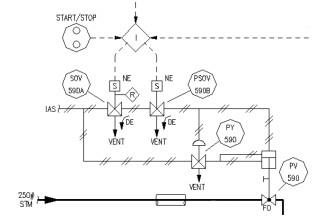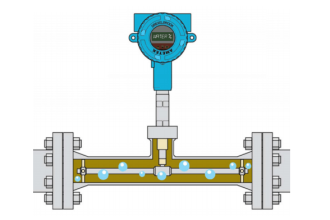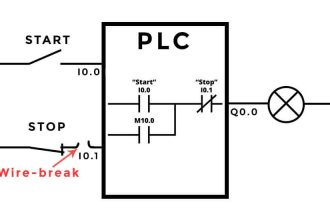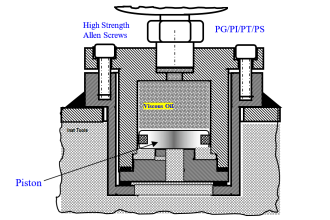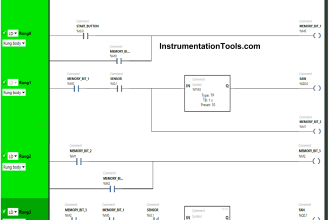Are you preparing for instrumentation lab exams or instrumentation workshops ? Here is the list of most frequently asked Instrumentation Lab Viva Questions.
Instrumentation Viva Questions

Q.1. Mention some of the transducers.
- Variable Resistor,
- Variable inductor,
- Variable capacitor,
- Synchros & Resolvers
Q.2. State the advantages of LVDT.
The advantages of LVDT are :-
- Linearity
- Infinite resolution
- High output
- High sensitivity
- Ruggedness
- Less friction
- Less hysteresis
- Less power consumption
Q.3. State the disadvantages of LVDT?
The disadvantages of LVDT are
- Large displacements are necessary for appreciable differential output
- They are sensitive to stray magnetic field
- Dynamic response is limited by mass of core
- Variation in temperature affects the transducer.
Q.4. Define transducer?
It is a device which converts a non electrical quantity into an electrical quantity
Q.5. What is the pressure transducer?
It is a device which converts the pressure into mechanical displacement which is later converted in to electrical quantity using a secondary transducer.
Q.6. Give commonly used pressure sensitive devices?
The commonly used pressure sensitive devices are bourdon tubes, bellows and diaphragms.
Q.7.What are the advantages of bridges?
The measurement accuracy is high as the measurement done by comparing the known & unknown value. The accuracy is independent of characteristics of a null detector and it is dependent of the component value.
Q.8.What is meant by balanced condition for Wheatstone bridge?
The bridge is said to be balanced when there is no current flow through the galvanometer, so potential difference across the galvanometer should be zero R1R4= R3R2
Q.9. What is the sensitivity of Wheatstone bridge?
Sensitivity = Deflection (D)/ Sensitive current ( I)
Q.10. Are RTDs and thermocouples intrinsically safe?
Yes. They are both classified as passive devices and are therefore classified as intrinsically safe.
Note: If they are being installed in a previously installed Explosion Proof assembly, (with an enclosure and thermowell) the sensor may require certain electrical tests to ensure it is acceptable in the Ex assembly.
Q.11. What are the major differences between a thermocouple and an RTD?
The most notable difference between a thermocouple and an RTD is the principle of operation and manufacturing. A thermocouple is made of two dissimilar metals joined so that a potential difference generated between the points of contact is a measure of the temperature.
An RTD, operates on the principle that electrical resistance of certain metals changes in a predictable way depending on the rise or fall in temperature. The two measurement tools each have their own advantages and disadvantages.
Q.12. What are the major advantages of a thermocouple ?
Advantages of the thermocouple include a wide range from -300°F to 2300°F, fast response time (under a second in some cases), low initial cost and durability. Overall, thermocouples are able to withstand rugged applications.
Q.13. What are the major advantages of RTD?
Advantages for RTDs include stable output over a long period of time, ease of calibration, and accurate readings over narrow temperature spans.
Q.14. What are the major disadvantages of a thermocouple ?
Disadvantages for thermocouples are their wide accuracy range, especially at elevated temperatures, difficult to recalibrate (seeing as though they are dependent upon the environment) and, finally, installation can be expensive if long lengths of thermocouple wire are needed.
Q.15. What are the major disadvantages of RTD ?
Disadvantages, when compared to the thermocouples, are: smaller overall temperature range ( -330°F to 930°F), higher initial cost and they are more fragile in rugged, industrial environments.
Q.16. What is the working principle of mercury in glass thermometer?
In order to calibrate the thermometer, the bulb is made to reach thermal equilibrium with a temperature standard such as an ice/water mixture, and then with another standard such as water/vapour, and the tube is divided into regular intervals between the fixed points.
In principle, thermometers made of different material (e.g., coloured alcohol thermometers) might be expected to give different intermediate readings due to different expansion properties; in practice the substances used are chosen to have reasonably linear expansion characteristics as a function of true thermodynamic temperature, and so give similar results.
Q.17. What is a thermocouple & how does it work?
A thermocouple is a device used extensively for measuring temperature. A thermocouple is comprised of at least two metals joined together to form two junctions. One is connected to the body whose temperature is to be measured; this is the hot or measuring junction.
The other junction is connected to a body of known temperature; this is the cold or reference junction. Therefore the thermocouple measures unknown temperature of the body with reference to the known temperature of the other body.
Q.18. What is the working principle of a thermocouple?
The working principle of thermocouple is based on three effects, discovered by Seebeck, Peltier and Thomson.
They are as follows:
1) Seebeck effect:
The Seebeck effect states that when two different or unlike metals are joined together at two junctions, an electromotive force (emf) is generated at the two junctions. The amount of emf generated is different for different combinations of the metals.
2) Peltier effect:
As per the Peltier effect, when two dissimilar metals are joined together to form two junctions, emf is generated within the circuit due to the different temperatures of the two junctions of the circuit.
3) Thomson effect:
As per the Thomson effect, when two unlike metals are joined together forming two junctions, the potential exists within the circuit due to temperature gradient along the entire length of the conductors within the circuit.
In most of the cases the emf suggested by the Thomson effect is very small and it can be neglected by making proper selection of the metals. The Peltier effect plays a prominent role in the working principle of the thermocouple.
Q.19. What is a RTD?
A Resistance Thermometer or Resistance Temperature Detector is a device which used to determine the temperature by measuring the resistance of pure electrical wire.
This wire is referred to as a temperature sensor. If we want to measure temperature with high accuracy, RTD is the only one solution in industries. It has good linear characteristics over a wide range of temperature.
Q.19. What is a piezoelectric sensor?
A piezoelectric sensor is a device that uses the piezoelectric effect, to measure changes in pressure, acceleration, temperature, strain or force by converting them to an electrical charge. A piezoelectric disk generates a voltage when deformed.
Q.20. How does a piezoelectric pickup work?
The piezoelectric effect is understood as the linear electromechanical interaction between the mechanical and the electrical state in crystalline materials.
The piezoelectric effect is a reversible process in that materials exhibiting the direct piezoelectric effect (the internal generation of electrical charge resulting from an applied mechanical force) also exhibit the reverse piezoelectric effect (the internal generation of a mechanical strain resulting from an applied electrical field).
Q.21. What is piezoelectricity?
Piezoelectricity is the electric charge that accumulates in certain solid materials (such as crystals, certain ceramics) in response to applied mechanical stress.
The word piezoelectricity means electricity resulting from pressure.
Q.22. What is a load cell?
A load cell is a transducer that is used to create an electrical signal whose magnitude is directly proportional to the force being measured.
The various types of load cells include hydraulic load cells, pneumatic load cells and strain gauge load cells.
Q.23. What is the measurement principle of load cell?
Load cell primarily consists of a spring material and strain gage. Spring material causes strain due to applied load and strain gage changes its resistance in accordance with the change in strain.
Q.24. What is a Photoelectric pickup & how does it work?
A photoelectric sensor, or photo eye, is a device used to detect the distance, absence, or presence of an object by using a light transmitter, often infrared, and a photoelectric receiver.
Q.25. How does a Photoelectric pickup work?
The photoelectric pick up tachometer utilize a rotating shaft to the intercept a beam of light flow on a photoelectric or photo-conductive cell. The shaft has an intermittent reflecting (white) and non reflecting (blade) surface.
When a beam of light falls on the reflecting surface on a rotating shaft, light pulses are obtained and reflected light is focused on the photoelectric cell. The frequency of the light pulses is proportional to shaft speed and so will be frequency of electrical o/p pulses from photoelectric.
Q.26. What is Torque?
Torque is a twisting or turning force about an axis that can be applied in a clockwise or counter-clockwise direction.
Q.27. What is the most common torque measuring principle?
It uses bonded strain gauge technology, where the strain gauges are bonded to a suitably designed shaft.
Q.28. What is a torque meter?
A torque sensor or torque transducer or torque meter is a device for measuring and recording the torque on a rotating system.
Q.29. How does a torque meter work?
It uses strain gauges applied to a rotating shaft or axle. With this method, a means to power the strain gauge bridge is necessary, as well as a means to receive the signal from the rotating shaft. This can be accomplished using slip rings, wireless telemetry, or rotary transformers.
Also Read : Top 100 Instrumentation Questions









